Panel Overview¶
The renderset panel is located on the right side of the 3D viewport window. It is the main way to
access renderset features. To access the side panel, press the N key on your keyboard and select
the polygoniq tab.
Info
If you have multiple polygoniq add-ons enabled, they will all be shown here.
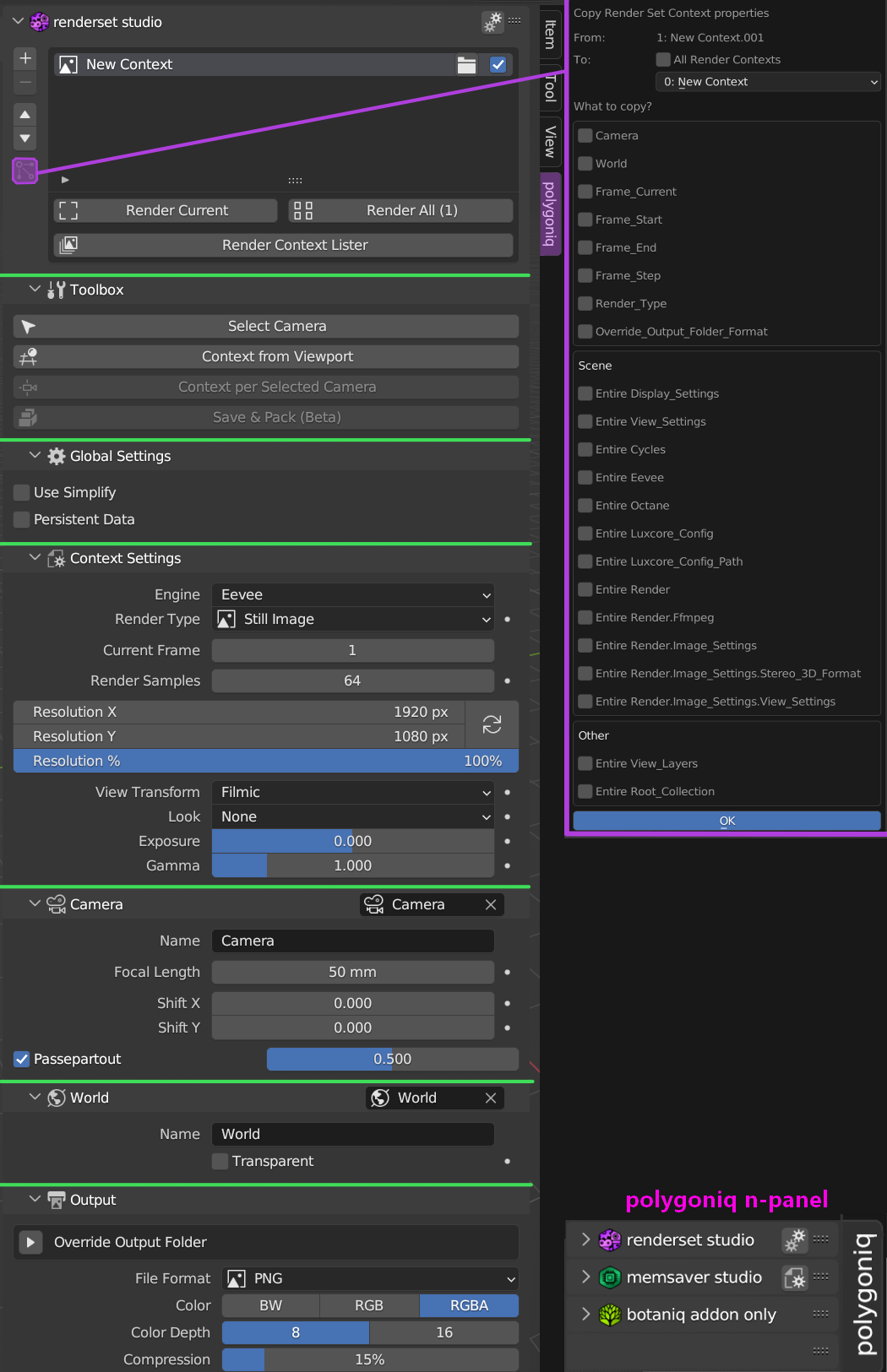
Toolbox¶

Select Camera¶
Operator that selects the active context camera.
Context From Viewport¶
Operator that creates new camera and context from your current viewport location.

Context per Selected Camera¶
Creates context for each selected camera.
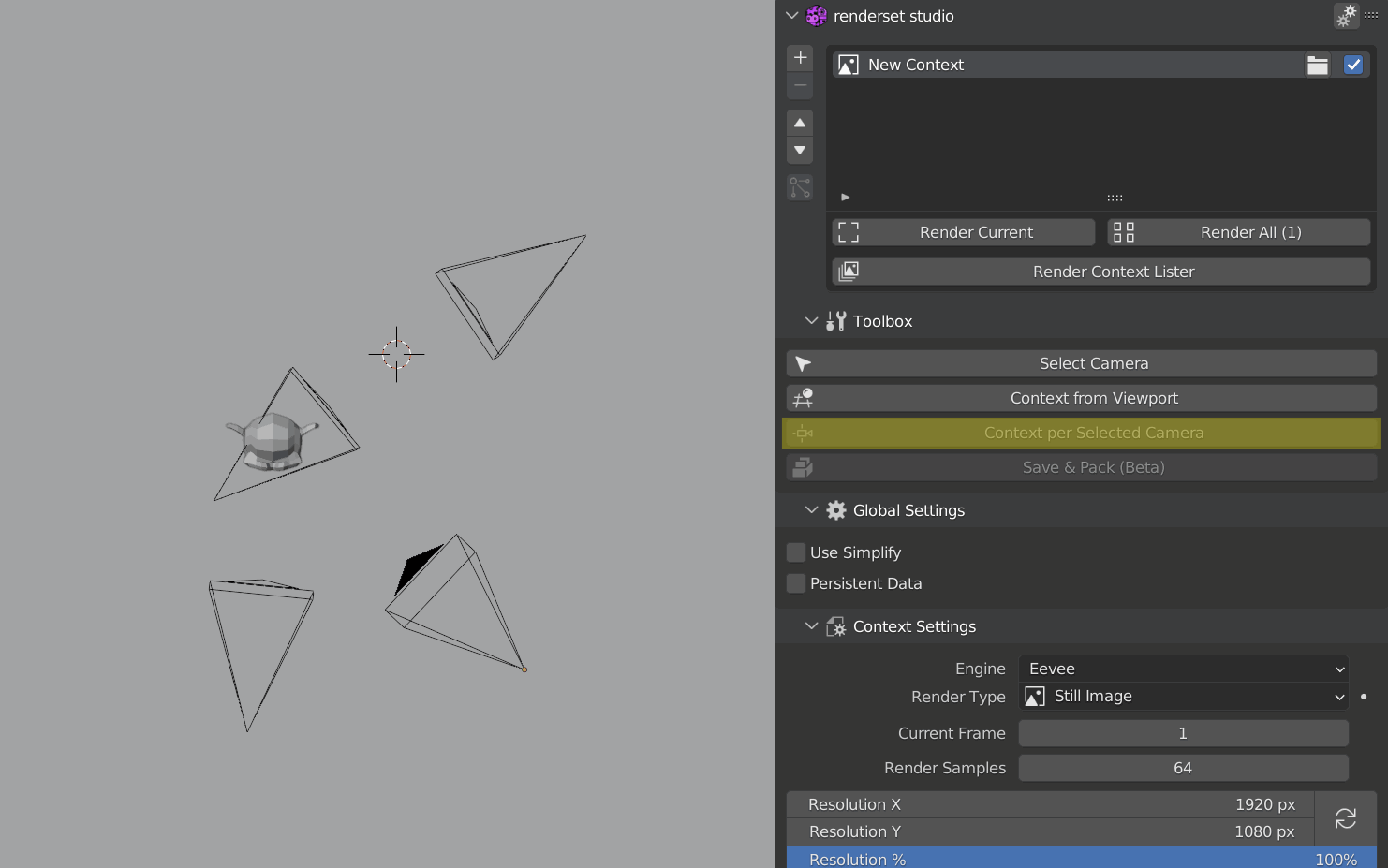
Save & Pack¶
Saves the original file, then packs all externally used data and saves the result in a separate file. This is useful for rendering on render farms. For more details, see the render farms chapter.
Global Settings¶
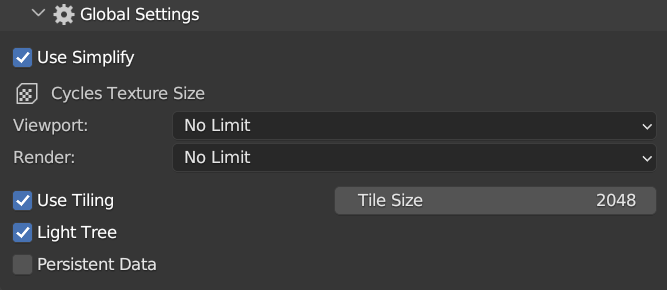
Renderset shows a few global settings in the panel for quick access. All of these settings can be changed in Blender's native GUI. Since some are tweaked extremely often when using renderset, we chose to provide a quick access GUI for them.
Simplify¶
Scales down textures so that they are no larger than the values chosen. This can help reduce computer memory resources when rendering large scenes with huge textures.
Use Tiling¶
This value is used to control the size of the tile used for rendering. Decreasing the size reduces memory usage.
Light Tree¶
Use a light tree to more effectively sample lights in the scene, taking into account distance and estimated intensity. This can significantly reduce noise, at the cost of somewhat longer render time per sample.
Certain lighting properties are not accounted for in the light tree. These include custom falloff, ray visibility, and complex shader node setups including textures. This can result in an increase in noise in some scenes that make use of these features.
This feature is currently disabled for AMD GPUs on macOS.
Persistent Data¶
Keep render data in memory after rendering for faster re-renders and animation renders at the cost of extra memory usage while performing other tasks in Blender.
When using multiple View Layers, only data from a single view layer is preserved to keep memory usage somewhat under control; however, objects shared between view layers are preserved.
Context Settings¶
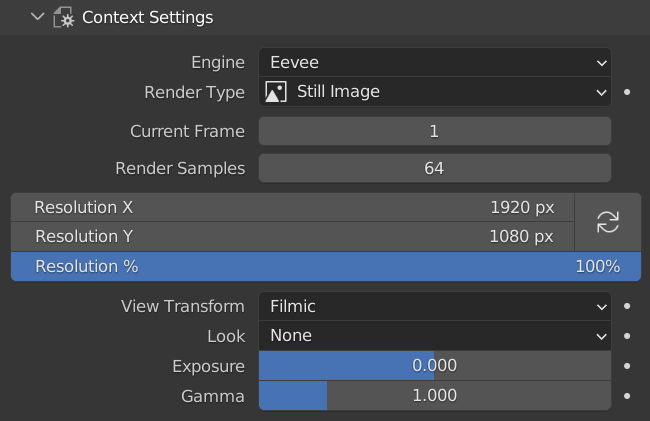
Renderset shows a few render settings in the panel for quick access. All of these settings can be changed in Blender's native GUI. Since some are tweaked extremely often when using renderset, we chose to provide a quick access GUI for them.
Engine¶
Select your desired render engine - Cycles, Eevee, LuxCore, or Octane.
Render engines included in Blender
Cycles and Eevee are included in Blender. LuxCore and Octane are third-party optional renderers that you have to get separately.
Render Type¶
Select between rendering a Still Image or an Animation.
Samples¶
The higher the number of sample passes, the more accurate lighting calculations are. More samples generally improve the quality of the render.
Resolution¶
Set the size of your output. Horizontal, vertical. The percentage allows you to play with the final resolution while preserving the image ratio.
View Transform¶
Change color management to achieve a different visual style of your render. You can choose from:
- Standard
- Filmic
- Filmic Log
- Raw
- False Color
Look¶
Manage the contrast settings of your scene.
Color Management Exposure¶
Used to control the image brightness applied before color space conversion.
Camera Settings¶
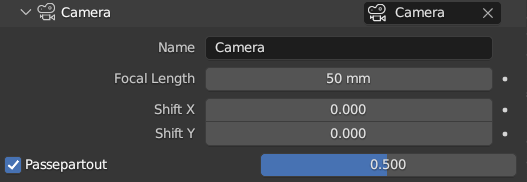
Renderset shows some camera settings in the panel for quick access. All of these settings can be changed in Blender's native GUI. Since some are tweaked extremely often when using renderset, we chose to provide quick access GUI for them.
We will go over the basics of some of these. Please check out the Blender camera documentation for a more in-depth explanation.
Focal Length¶
Changes the distance between the optical center of the lens and the camera's sensor. This affects the field of view and zoom. Longer focal lengths result in a smaller field of view (more zoom), while short focal lengths allow you to see more of the scene at once (larger field of view, less zoom).
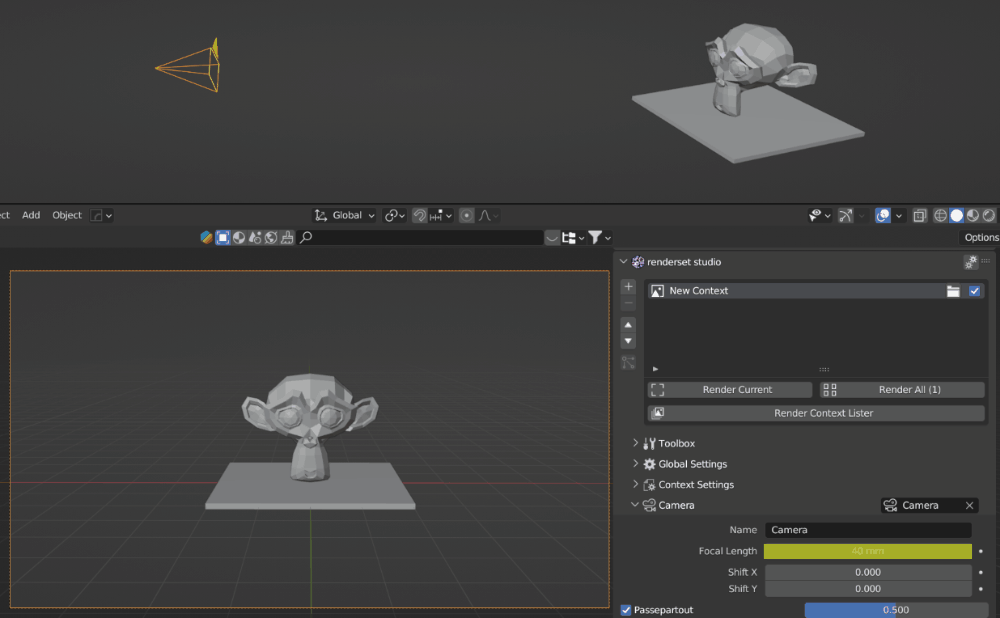
Shift X/Y¶
Moves the field of vision of your camera, without changing perspective. Allows for the adjustment of vanishing points. Vanishing points refer to the positions to which parallel lines converge.
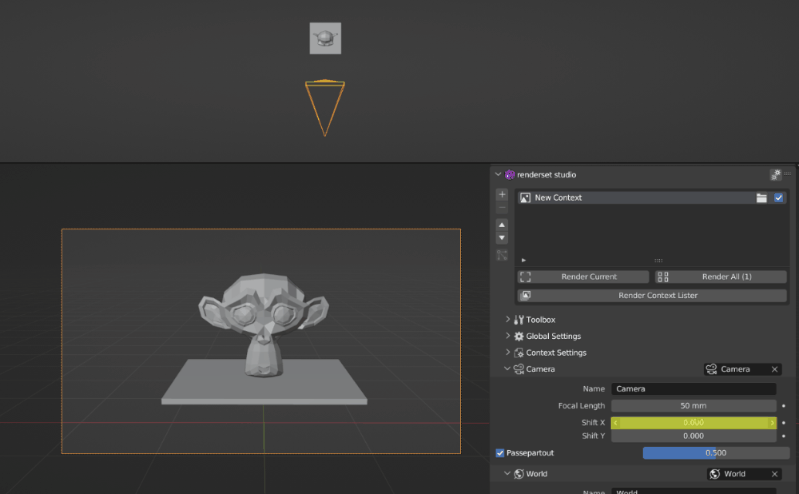
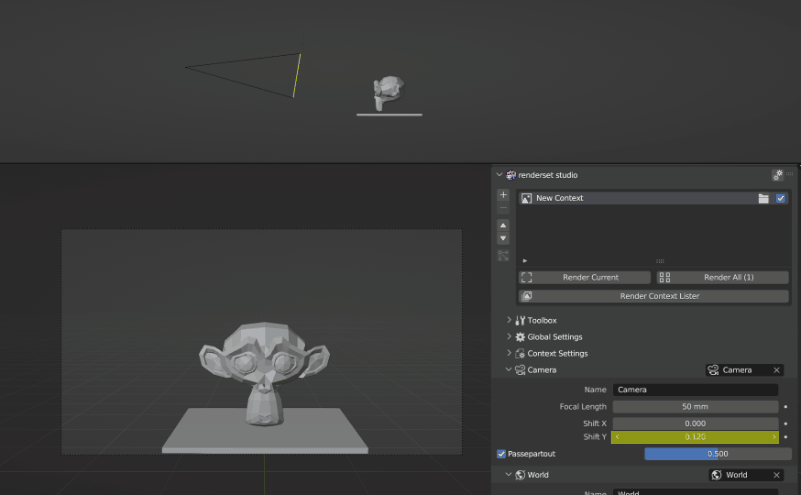
Passepartout¶
Changes the opacity of the darkened overlay in camera view.
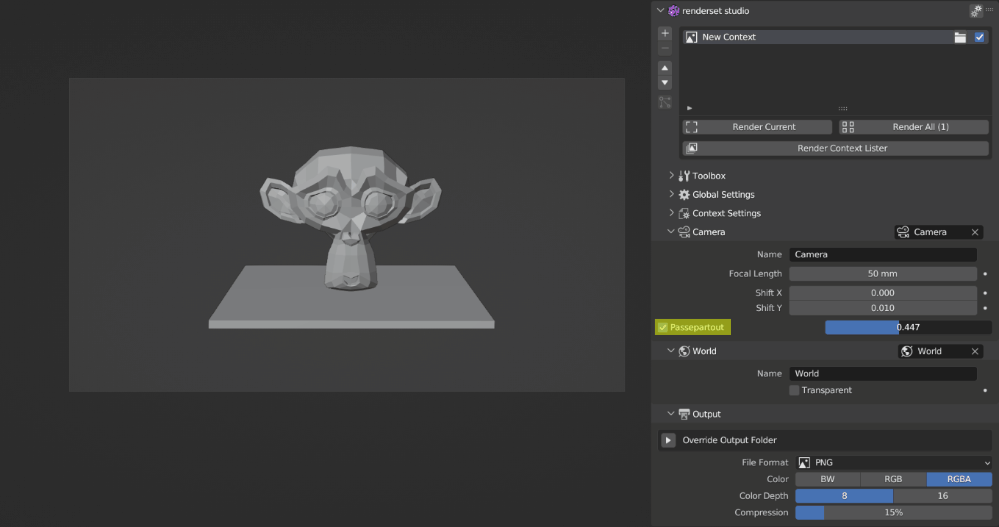
World Settings¶

renderset shows a few world settings in the panel for quick access. All of these settings can be changed in Blender's native GUI. Since some are tweaked extremely often when using renderset, we chose to provide a quick access GUI for them.
Transparency¶
Transparency of the background (HDRI influences the scene, but it is not visible). This is useful when you want to swap HDRI for a different background in post-production.
Output Settings¶
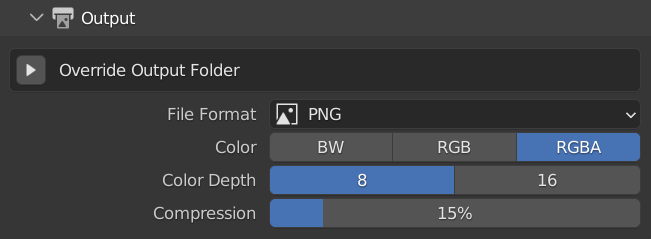
Renderset shows a few output settings in the panel for quick access. All of these settings can be changed in Blender's native GUI. Since some are tweaked extremely often when using renderset, we chose to provide a quick access GUI for them. Follow the official blender documentation here:
Override Output Folder¶
Choose between using output folder format from preferences, or choose your own - This setting is related to each context
